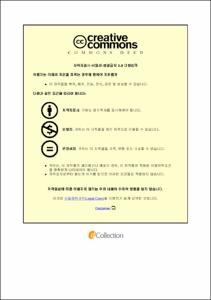Ulsan Univ. Repository
Thesis
General Graduate School
Mechanical & Automotive Engineering
2. Theses (Ph.D)
A Numerical Study on Residual Gas Effects on Combustion, Performance and Emission of a Small Spark Ignition Engine
- Abstract
- There are a large number of motorcycles in operation today, with that number constantly increasing, the goal of improving motorcycle engine power, while satisfying emission standards, is worth investigating. Two essential factors in the study of engines are engine efficiency and the reduction of pollutant emissions. Past researchers are attempting to optimize engine combustion systems by used experimental optimization method. However when the optimization tasks focus on hardware components such as changing the geometry of the combustion chamber, bore, stroke or injection nozzle, the experimental optimization method is limited because of its high cost, manufacturing time and resource consumption. It is complicated to determine the residual gas ratio, the effective release energy and control combustion duration under the various testing conditions from the experiments. As a result, experimental investigations in detail of residual gas and effective release energy with various combustion duration, bore-stroke ratios, valve port diameter and exhaust valve closing timing is limited till date.
The residual gas fraction is known as effective factors, which influence energy efficiency and pollution engine exhaust gas. The trapped residual gases in the combustion chamber will premix with the fresh air-fuel and take part in the next combustion stroke. This trapped exhaust residual gases also effect on the NOx , HC and CO emission of the engine. The peak pressure rise shows the increasing pressure value per crankshaft angle, this peak pressure rise is expected higher value to reduce heat loss and improve engine efficiency. An effective method for determining the residual gases, effective energy, and peak pressure is necessary. To obtain this target, the experimental system is installed with a dynamo system and a simulation model base on AVL-boost software was setup. Through combined experimental and simulation methods, author eliminated certain above drawbacks. From results of the research, we thoroughly investigated the effects of combustion duration, bore-stroke ratio, intake port diameter-bore ratio, exhaust valve closing timing and internal exhaust residual gases to improve engine performance and emission characteristics.
- Issued Date
- 2021
- Awarded Date
- 2021-02
- Type
- Dissertation
- Affiliation
- 울산대학교
- Department
- 일반대학원 기계자동차공학과
- Advisor
- Prof. Lim, Ocktaeck
- Degree
- Doctor
- Publisher
- 울산대학교 일반대학원 기계자동차공학과
- Language
- eng
- Appears in Collections:
- Mechanical & Automotive Engineering > 2. Theses (Ph.D)
- 파일 목록
-
-
Download
 200000370634.pdf
기타 데이터 / 3.83 MB / Adobe PDF
200000370634.pdf
기타 데이터 / 3.83 MB / Adobe PDF
-
Items in Repository are protected by copyright, with all rights reserved, unless otherwise indicated.